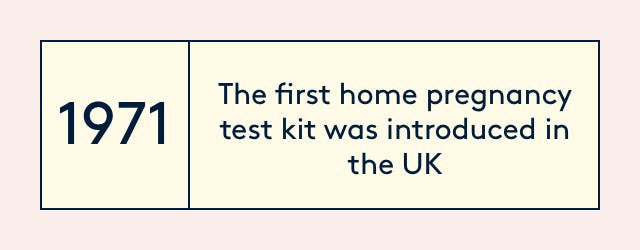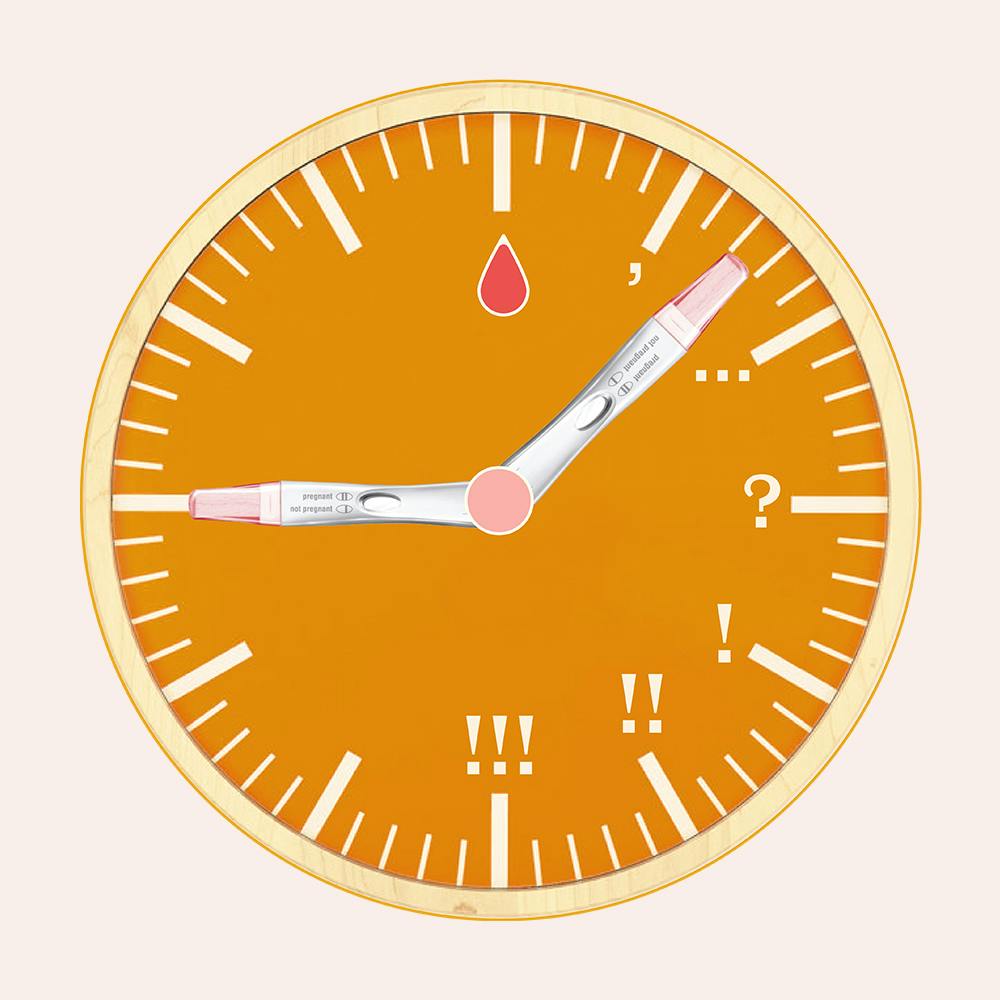Illustrated by Erin Rommel
Most sexually active cishet women will have taken a pregnancy test at one time or another in their lives.
For many, it is an experience marked by extreme emotions. Those who don’t want to be pregnant and those who do will often experience the same fear and anxiety in the 3 minutes between peeing on the stick and finding out the result. The next feeling is usually either panic or excitement—pregnancy is a difficult thing to feel neutral about.
Despite the vast array of emotional reactions, though, there’s usually only one that we see in advertising campaigns for pregnancy tests: elation. To understand why this is, and the complex relationship between pregnancy testing and women’s rights, we first need to understand when and how they entered the common experience.

Pregnancy testing began, quite unbelievably, in the late 1920s in Berlin and involved mice. Yep, you read that correctly: mice. The test involved injecting urine of a woman who wanted to find out if she was pregnant into a female mouse; if the mouse then went through puberty, this indicated the presence of the pregnancy hormone.
In the decades that followed, the animals changed (rabbits, South African toads…) as did the impact on the animals of the test, but the principle remained the same. Even in the early 1960s, UK doctors were sending urine samples off to labs where they would be injected into toads to discover whether or not a patient was pregnant.
Innovation led to the obsolescence of animal testing in the process in mid-1960s, but the test was still fairly labour-intensive, meaning that it could only be accessed through a GP. As a result, this became governed by medical practitioners (the majority of whom were men), and therefore exposed women to the judgement of a third party.
“The limited access to testing also meant that the NHS only really offered the tests in certain contexts,” Jesse Olszynko-Gryn, a lecturer in History of Health and Wellbeing at the University of Strathclyde, Glasgow (who is also writing a book about the history of pregnancy testing in the UK), tells me. “More specifically, the motivations behind those seeking to know if they were pregnant were split into roughly three groups: ‘medical’ (such as if they were menopausal or had another relevant health issue); ‘social’ (unmarried women); or simply ‘curious’.” The needs of the final category were largely deemed lesser, and so they were not as likely to be able to access the tests until much later.

In 1965, commercial labs began offering paid-for pregnancy tests directly, shifting the perception of service-users from “patients” to “clients”. According to Olszynko-Gryn, “the laboratories initially charged £2 for a test and (controversially) returned the result not to a doctor but to the woman herself,” therefore affording women more autonomy over their own bodies and privacy.
It wasn’t until 1971 that the first home pregnancy test kit was introduced in the UK, hot on the tail of two incredibly significant legislative moments for women’s rights: the introduction of the 1967 Abortion Act and the1969 Divorce Reform Act. At the time, taking the process out of the health service and into women’s own hands was seen by many as a very radical move, and encountered resistance from many medical practitioners.
But it was a move that was certainly welcomed, if the numbers are anything to go by; according to Olszynko-Gryn’s research, in the first year of home pregnancy testing, an estimated 1.5m tests were performed (although many of these continued to take place in labs).
However, taking the testing process away from the NHS also shifted the burden of cost for the test onto women, thus allowing companies to commoditise the testing process. A knock-on impact was that this then tied something as fundamental to women’s health as knowing whether or not they are pregnant to the vagaries of the economy and price pressures linked to inflation.
“The history of pregnancy testing is one in which the free market wins,” explains Olszynko-Gryn. The burden of the cost of pregnancy testing is still to this day shouldered mainly by women, a fact that seems at odds with other more progressive developments in terms of feminism.
The commercialisation of pregnancy tests also gave influence to the advertising industry in the conversation around women’s reproductive rights—with relatively little regulation. And the pervasive (if in many cases largely unrelatable) trope of women jumping for joy after reading positive test results in adverts was a byproduct of this shift.

“It’s largely the result of marketing research from the 1990s,” Olszynko-Gryn explains, “which separated customers into two groups: the ‘yearners’ and the ‘dreaders’. Yearners were women who were hoping for a positive result, dreaders were those hoping for a negative one. The result of the market research at the time was that the dreaders wouldn’t need much convincing to spend money on a home pregnancy testing kit, whereas yearners would need more coaxing to spend money rather than just wait to get tested at the doctor.” For this reason, adverts were often targeted at women who were trying to get pregnant—which is still very much the case today.
Even in 2020 you’d be hard pressed to find a pregnancy testing advertising campaign that depicts quite how heartbreaking a positive result can be for many women. This, in turn, has contributed to the stigma faced by many women who are disappointed or even distressed by the results, because the prevailing narrative we are fed is that pregnancy is something to be celebrated rather than a traumatic event (which can often be the case). This, in turn, contributes to the shame associated with abortion.
“Before pregnancy testing, women could—and frequently did—take actions to resume their menstrual cycle,” says Olszynko-Gryn, “without this necessarily being categorised as an abortion.” This also added to the emotional burden of women, in general, when either terminating or losing a pregnancy.
“The problem with early pregnancy testing is that it can pick up ‘chemical pregnancies’ that later prove not to be viable,” says Olszynko-Gryn. “This is something that has happened throughout history, and most women were none the wiser.”
Being able to know about a potential pregnancy makes losing it so much harder on an expectant mum. It also increases the emotional pressure on women—often leading many to blame themselves if a pregnancy later turns out not to be viable, and question what they could have done differently.
In order for pregnancy testing to really become the truly revolutionary force it has the potential to be, it seems that three significant shifts are needed. Firstly, pregnancy testing should be freely available, much like HIV tests or what we are now seeing with COVID-19 tests, and taken away from the consumer-goods market. This would go some way to correcting the financial burden shouldered by women when it comes to contraception and reproductive health.
Second, women deserve information around pregnancy testing to reflect the real experiences, rather than painting a default narrative of a positive test result equalling celebration. If testing is to be kept within the commercial sphere, the least that advertisers can do is to be honest about the different emotional responses experienced by women in this position.
Finally, and most importantly, women (and men) deserve better education within the school system and to be equipped with all of the facts around how reproduction works, when conception is most likely to occur and the percentage likelihood of fertilisation resulting in a viable pregnancy. This would help to reduce the pressure on women and normalise the experience of miscarriage, which is still shrouded in stigma and shame.






